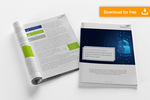In order to preserve the original version of the data, data must not be changed by external or internal influences during the entire storage period, and must be protected against manipulation and deletion. Archiving systems which ensure the integrity of data are used for this purpose.
Archiving must not be equated with data protection (backup). In archives, data which is no longer needed in daily operations is placed. Backup involves copying data in order to restore it in the event of data loss or compromise, e.g., due to cyber-attacks.



